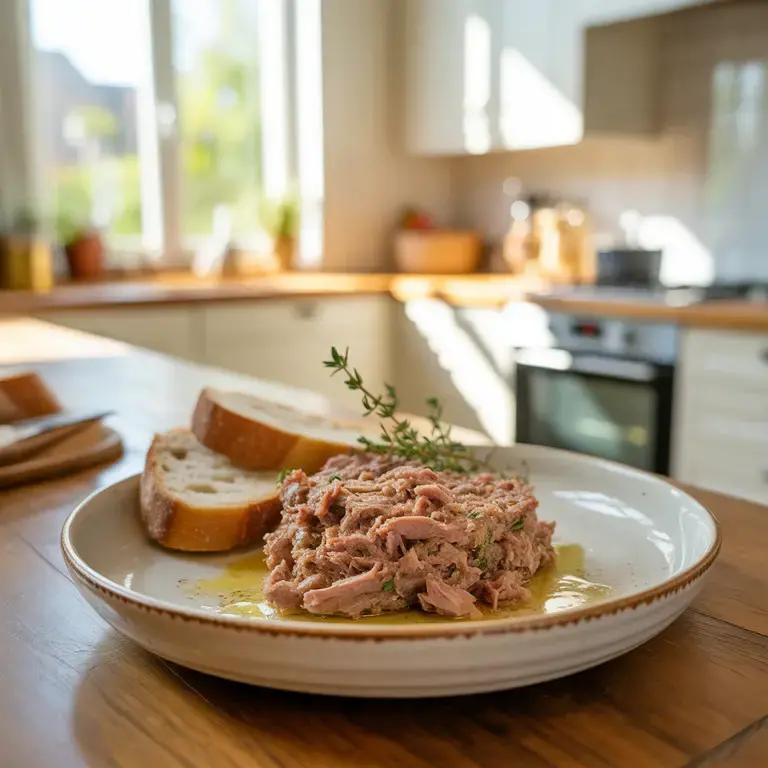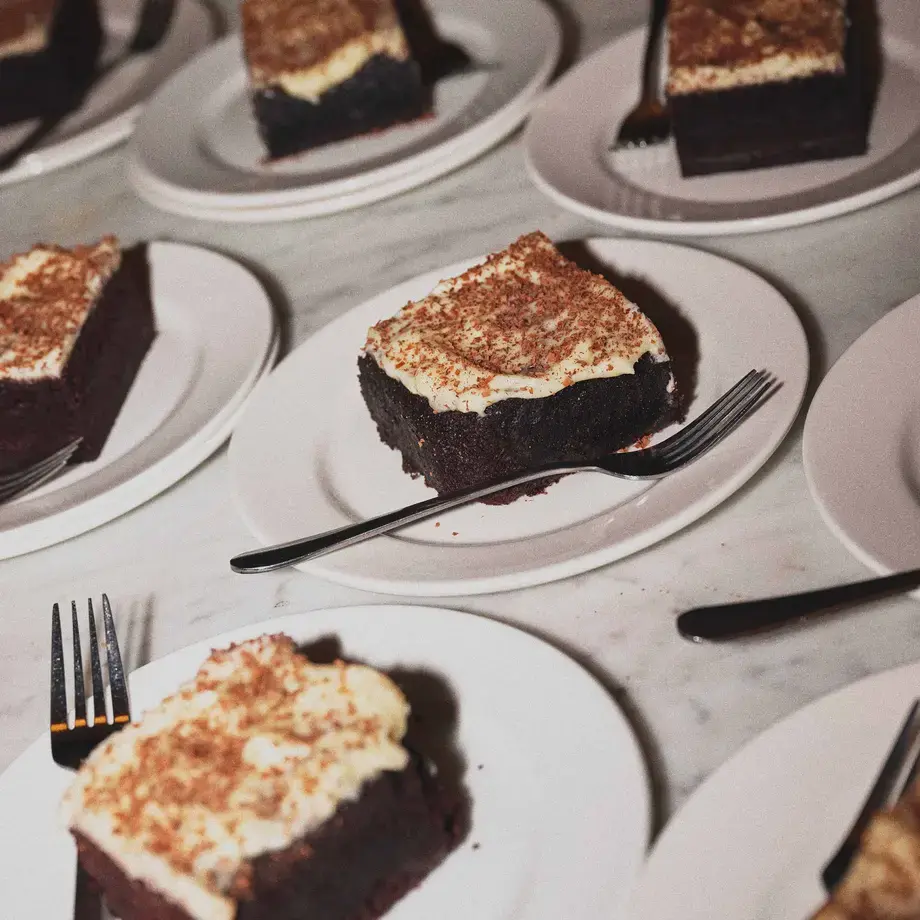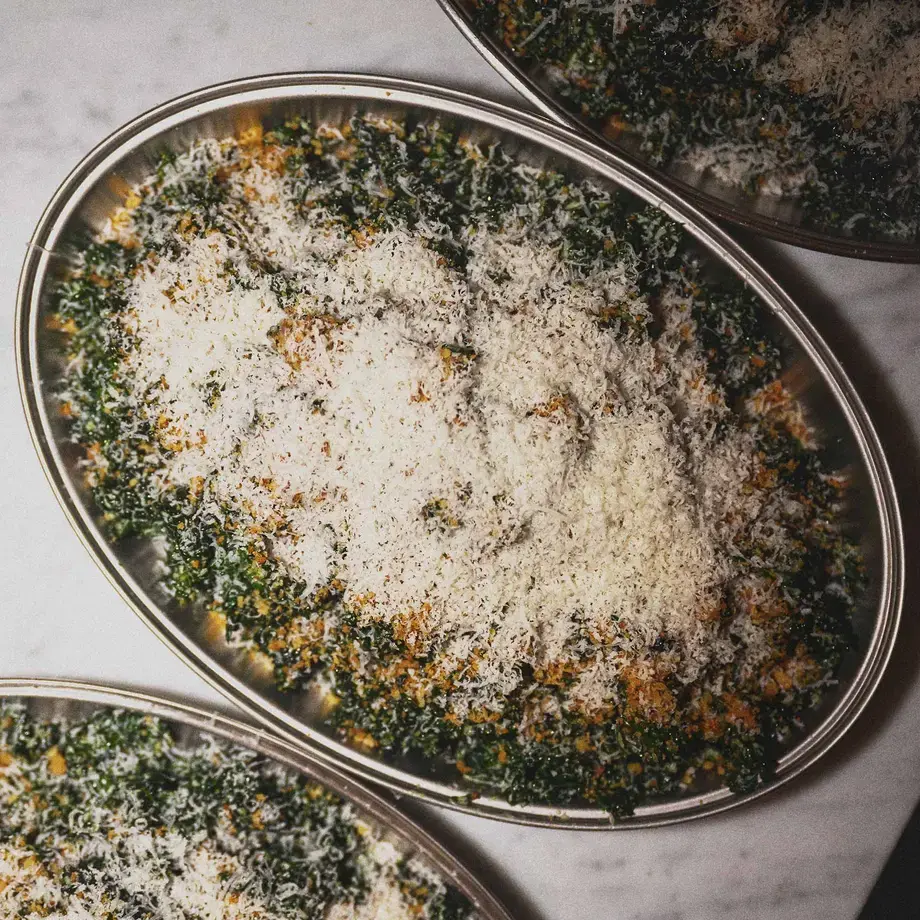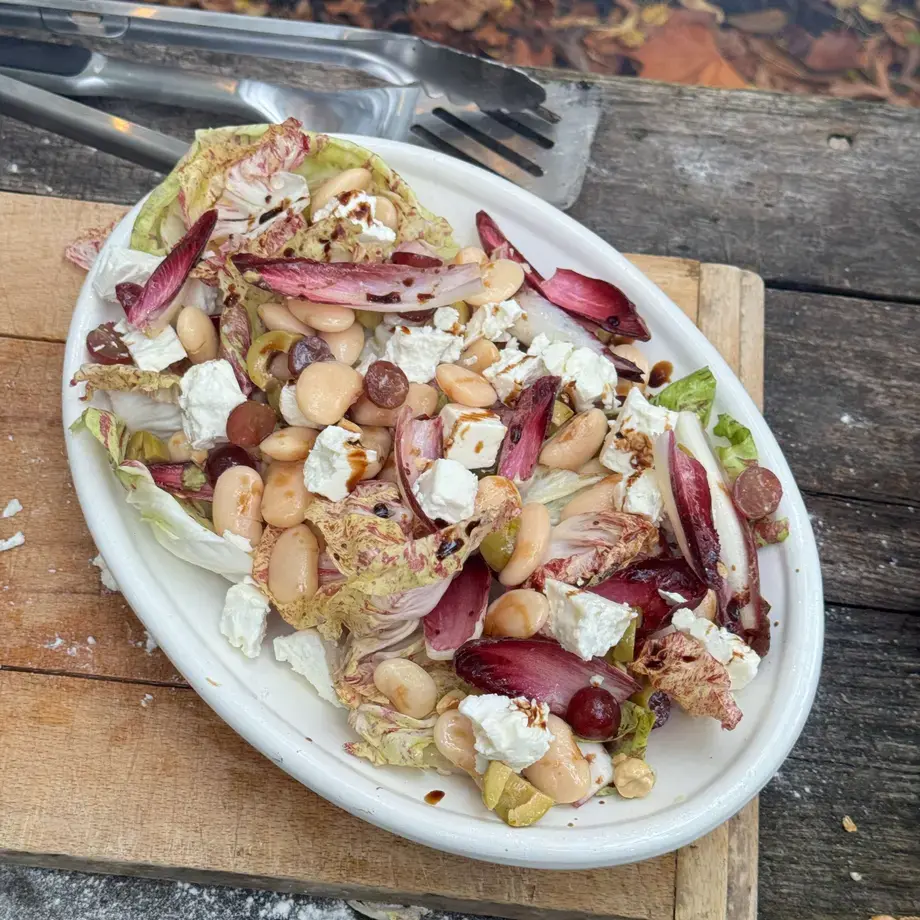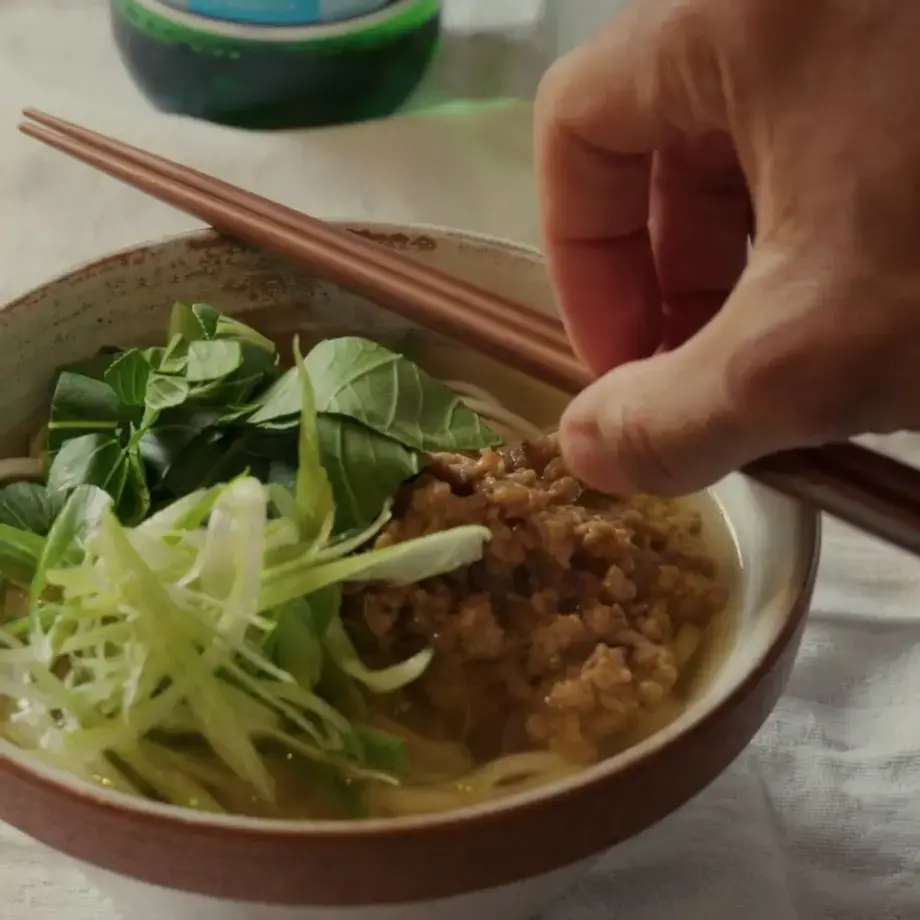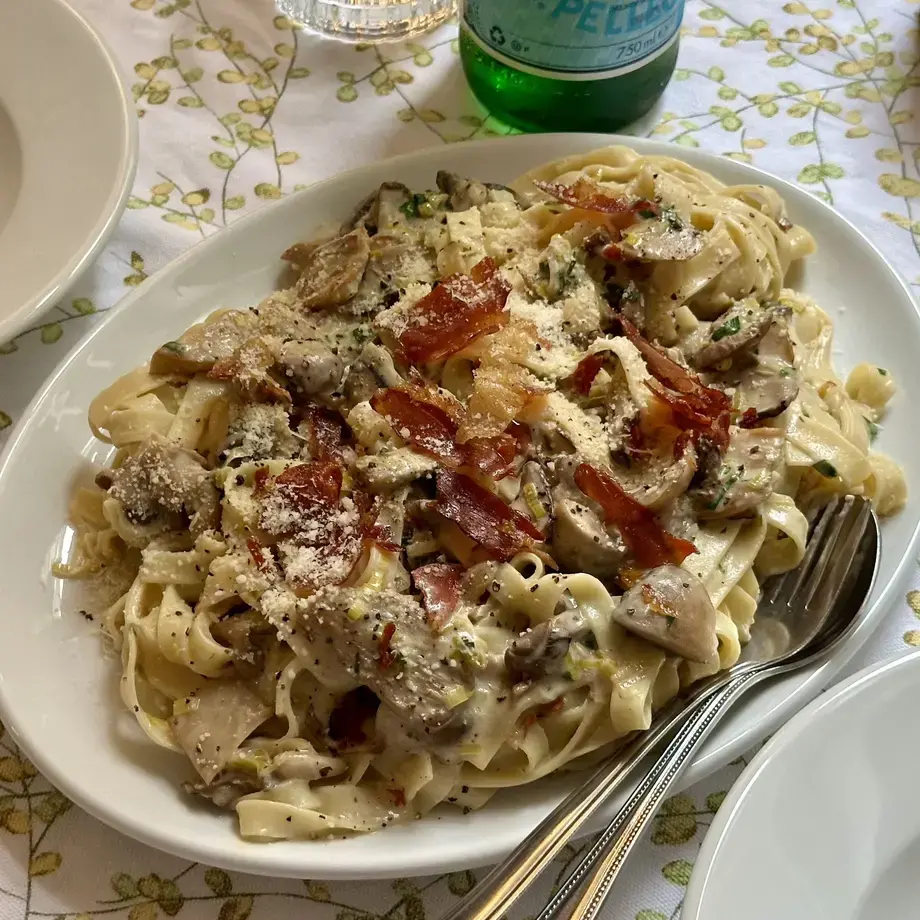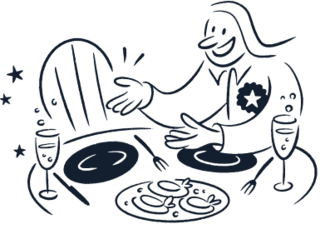The tastiest duck rillettes extract all of the intense flavour from duck legs through slow and low cooking. For this dish, duck legs are far better than other cuts like duck breast. Breast meat easily dries out when cooked for too long, whereas the duck leg meat has more fat, making it suited to this style of cooking.
To enhance the flavour, you’ll also need actual duck fat to cook the legs in. This adds the authentic taste of French cooking and is a must-include ingredient for the best rillettes.
Rillettes are also known for intense flavour, so don’t hold back on the seasoning. We’ve shared a simple recipe above featuring garlic cloves and thyme, but you can add more herbs and spices as desired. A pinch of cinnamon or nutmeg can elevate the dish and add a new, enticing flavour to the meat.
Whether you decide to shred the meat into chunks or finer pieces, it’s easiest while the meat is still warm. It’ll separate better with a little heat, and will be quicker to remove any unwanted sinew or bones. You can also add any remaining duck fat after the shredding to help bind the rillettes together before serving or transferring them to a ramekin jar for storage.
If you intend to store the rillettes for more than a day or two, it’s advisable to smear a layer of duck fat over the top of the meat in the ramekin jar to help it retain its freshness.
Serving suggestions
Duck rillettes are delicious served alongside slices of sourdough toast to spread the meat over. The crunchy texture of the bread contrasts with the tender and soft duck rillettes. Ideally, you need to serve duck rillettes at room temperature, as the fat in the meat will harden with the cold.
If you want to add the duck rillettes to a tasty charcuterie board, then try pairing the rillettes with pickled red onions and radishes to cut through the richness of the fat. Mild, soft cheese pairings, such as Brie or Camembert, won’t overpower the rillettes and create an irresistible flavour combination when spread over a crunchy slice of bread.
Variations by region
To explore the regional variations of this dish, it’s best to first understand the definition of what a duck rillette is. In its simplest form, duck rillettes is almost like a pâté, but with a more rustic side. It’s not as smooth as a classic pâté spread, as the meat is shredded rather than blended.
In terms of the meat typically used, you’ll find both duck and pork rillettes common throughout France. In fact, it’s widely thought that rillettes originated with the use of pork in French regions, such as the Loire Valley. For the pork rillettes, a selection of pork belly or shoulder is slowly cooked until tender, and then transformed into the rillettes using the same method as in our recipe above. In Southwest France, rillettes are often made with duck and goose meat. Meatier and chunkier, rillettes in this region are known for being thicker and more rustic.
Duck liver parfait is another format to explore, made by blending duck liver with butter, cream, egg and seasonings. Though enjoyed in a similar way to the rillettes, parfait is rich and silky smooth, unlike the textured, savoury style of rillettes. Once you’ve mastered duck rillettes, try this classic duck liver parfait recipe.
